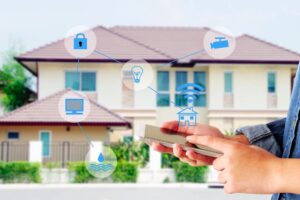Computers have become indispensable in our personal and professional lives today, as we live in a digital environment. From laptops and desktops to servers and data centers, these devices consume a lot of energy on a daily basis. With rising energy prices and increasingly urgent environmental issues, energy-efficient computing has become an important goal. Reducing energy consumption not only reduces electricity costs but also helps the environment by reducing the amount of energy needed to run technology. Learning how to reduce energy consumption when using computers can help individuals and businesses develop smarter and more sustainable behavior.
Optimizing Hardware Settings for Energy Efficiency
One of the easiest and most effective ways to reduce energy consumption is to change the hardware settings of the device. Most modern computers have power management features that help them conserve energy when not in use. You can save a lot of energy by changing settings such as screen brightness, computer sleep mode, and processor usage without affecting performance. One way to save energy is to reduce the screen brightness to a comfortably low level. This is especially effective because your computer’s display consumes a lot of energy. By putting your device into sleep or hibernation mode when it’s not in use, you can ensure that it uses as little energy as possible when it’s not in use.
Use Hardware Components that Use Less Energy
The hardware you choose can have a significant impact on your computer’s overall energy consumption. Devices with energy-efficient processors, solid-state drives (SSDs), and LED displays use less power than older or less optimized components. SSDs, for example, use less power than regular hard drives because they don’t have any moving parts. Many modern CPUs also have built-in energy-saving features that adjust their operation based on the workload. When purchasing a new computer or upgrading an old one, choosing a model that’s certified by standards like ENERGY STAR can help ensure that your device uses less energy over its lifetime.
Manage Software and Background Processes
The way software runs on your device can also affect how much energy it saves. Many programs and background processes run constantly, which can drain system resources and cause your computer to consume more power. Regularly checking and closing unused applications, especially those that use a lot of CPU or GPU power, can help save energy. Using lightweight software and not launching programs you don’t need can help your machine work less hard. It’s also important to keep your software up to date, as upgrades often provide performance improvements that can help save energy.
Take Advantage of Cloud Computing and Virtualization
Cloud computing and virtualization are great ways to reduce energy consumption in computing environments, especially in data centers and enterprises. By moving workloads to the cloud, businesses can take advantage of the efficiencies of large data centers, which use energy more efficiently than individual on-site computers. Virtualization allows multiple virtual computers to run on a single physical server. This maximizes resource utilization and reduces the number of physical devices required. This consolidation method requires less energy to run and cool the equipment, making it more environmentally friendly than traditional IT installations.
Use Effective Cooling Solutions
Cooling systems in computer environments, especially in data centers, consume a lot of energy and account for a large portion of total energy consumption. An efficient cooling system can significantly reduce the energy consumption of computers. To prevent equipment from overheating and reduce the need for energy-intensive cooling systems, you can take simple measures such as ensuring adequate air circulation around the equipment, cleaning dust filters, and placing the equipment in a cooler location. Advanced cooling systems such as liquid cooling or free air cooling use less power than regular air conditioning, which saves energy. Placing laptops and desktops in well-ventilated areas can help to better manage heat, extend the life of the equipment, and save energy for home users.
Reducing Screen Time and Peripheral Usage
Displays and peripherals such as printers, scanners, and external hard drives consume power when they’re turned on. Turning off displays when you don’t need them and unplugging peripherals after use are two ways to reduce energy waste. Most new monitors have a power-saving mode that automatically dims or turns off the screen when you’re not using it for an extended period of time. You can also save energy by enabling duplex printing (printing on both sides of a sheet of paper) and putting your printer in power-saving mode. Careful use of peripherals helps foster a culture of energy conservation that extends beyond the computer itself.
Choose Lightweight Software and Operating Systems
Software and operating systems that are designed to consume fewer resources generally use less power. Lightweight operating systems, especially on laptops and mobile devices, can extend battery life by reducing background activity and making everything run more smoothly. For example, versions of Linux or stripped-down versions of Windows that are designed for efficiency use far less power than full-blown, resource-intensive computers. Likewise, choosing lightweight or purpose-built software can reduce the load on your processor and memory, which in turn reduces energy consumption.
Use Battery and Power Management Tools
Many devices have built-in battery and power management features that allow users to monitor and manage the device’s energy consumption. These programs can help you determine which apps are using the most energy and provide tips for extending battery life. By using these tools to set power-saving profiles or limits on laptops and mobile devices, you can significantly reduce the amount of energy you use for everyday tasks. You can change these settings based on whether your device is plugged in or running on battery power for optimal performance and battery life. By using these tools correctly, you can use energy responsibly and potentially even extend the life of your device’s battery.
Conclusion
Energy-efficient computing is no longer just a technological issue; it’s also a necessity for saving money and protecting the environment. Homes and businesses can save a lot of energy by adjusting hardware settings, choosing energy-efficient components, carefully managing software, and changing long-term usage habits. Advances in cloud computing, virtualization, and cooling technology are also helping to move toward sustainable technology use. Ultimately, energy-efficient computing is about understanding how we use technology and making efforts that are good for both the world and our wallets.
FAQs
1. Can I save energy by turning off background apps?
Yes, turning off background apps that are not in use can reduce CPU and memory usage, which can save energy.
2. How does using the cloud help save energy?
Cloud computing uses specialized large data centers that use less energy than a single on-site server, reducing overall energy consumption.
3. Is it worth using reconditioned or recycled equipment to save energy?
Using remanufactured or recycled equipment can reduce the need for new products, which saves energy and resources needed to produce products.
4. Can software upgrades reduce energy consumption?
Yes, upgrades often include performance and efficiency improvements that help reduce power consumption.
5. What role do cooling systems play in our energy consumption?
An efficient cooling system can reduce the energy required to keep equipment at an acceptable operating temperature. This is especially important for large data centers.




